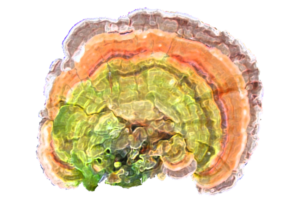Yihuai Gao, Shufeng Zhou, Guoliang Chen, Xihu Dai, Jingxian Ye, He Gao
ABSTRACT
The polysaccharide fractions and triterpenes isolated from Ganoderma lucidum have shown protection effects on the liver in animal studies. This double-blind, randomised, and multicentered study aimed to evaluate the safety and effect of a G. lucidum extraction, Ganopoly, in chronic hepatitis B. Ninety patients with chronic hepatitis B, hepatitis В viral (HBV) DNA positivity, and aminotransferase elevation were included in this multicenter prospective randomized Phase I/II study. Patients were randomized to be given Ganopoly (n = 60) or placebo (n = 30) for 12 weeks, then followed up for 13 weeks. Effect of therapy on levels of HBV DNA and aminotransferase activities in serum and hepatitis В е antigen (HBeAg) status were investigated. There were 78 assessable patients who entered the trial for efficacy and safety; 13 of 52 (25%) patients receiving Ganopoly responded by reducing HBeAg and HBV DNA, compared to 1 of 26 (4%) in the control group (P < 0.05). Among those with serum aspartate aminotransferase (AST) values < 100 U/L (n = 29), 41% (12/29) responded, and among those with AST values > 100 U/L (n = 23), 65% (15/23) responded. Within the 6-month study period, 33% (17/ 52) of treated patients had normal aminotransferase (ALT) values, and 13% (7/52) had cleared hepatitis B surface antigen (HBsAg) from serum, whereas none of the controls had normal ALT values or had lost HBsAg. Eight of 60 patients in Ganopoly group and 4 of 30 in the controls were unable to be followed up due to loss or withdrawal. Our study indicates that Ganopoly is well tolerated and appears to be active against HBV in patients with chronic hepatitis B.
Reference:
International Journal of Medicinal Mushrooms, Volume 4, 2002 Issue 4; DOI: 10.1615/IntJMedMushr.v4.i4.50

